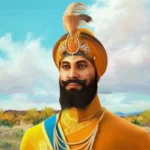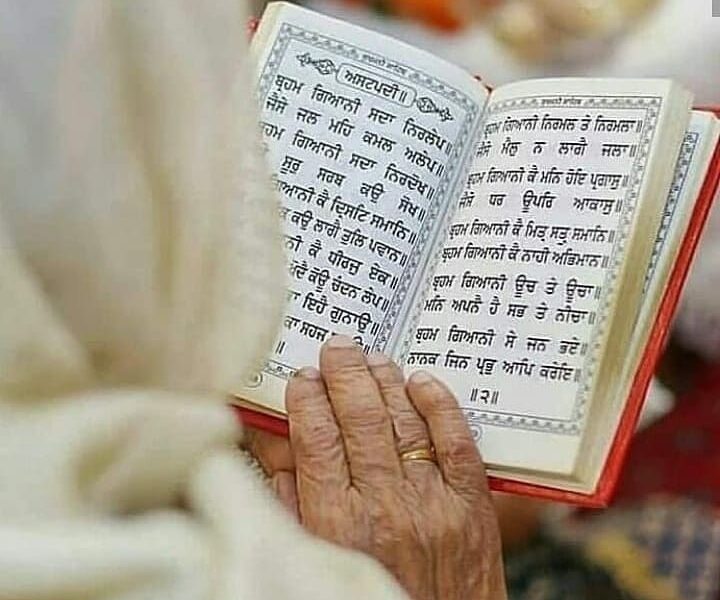Out of ten Gurus of Sikhism, Guru Har Rai was the seventh. Guru Har Rai Ji was the incarnation of kindness and gentleness. at the age of 14, he became the Sikh leader, after the sixth Sikh leader his grandfather Guru Hargobind died on 3rd March 1644. Guru Har Rai created Kiratpur sahib as a town of gardens and parks. Situated on the banks of a tributary of the Sutlej, he planted fruit-bearing and flowers trees all over the zone.
Guru Har Rai Sahib was a man of peace but he never discharged and disbanded the armed Sikh Saint Soldiers who earlier were maintained by his grandfather (Guru Hargobind Sahib). Guru Har Rai Ji carry on the traditions of his Grandfather Guru Hargobind by walk down the sacred path of the warrior-saint. He continually kept a mounted guard of 2,200 warriors whilst continue to spread the Waheguru message.
Fast Facts
Name: Har Rai
Birth: January 16, 1630
Place of Birth: Village Kiratpur (Anandpur)
Father: Baba Gurditta
Mother: Mata Nihal Kaur
Wife: Mata Krishen Devi
Children: Guru Harkrishan, Baba Ram Rai
Guruship timeline: 8 March 1644– 6 October 1661
Death: 6 October 1661 (aged 31)
Death Place: Kiratkarnir Sahib, Mughal Empire, Lahore Subah
Indian spiritual teacher: Seventh Sikh Guru
Spiritual Predecessor: Guru Hargobind
Spiritual successor: Guru Har Krishan
The early life of Guru Har Rai
Guru Har Rai was born on January 16, 1630, in Baba Gurditta to Kiratpur the elder son of Guru Hargobind. From a very younger age, he displayed sensitivity to all living stuff and esteemed himself to his grandfather Guru Hargobind. Thus, living a lifejourney of humility, Guru Har Rai Ji inspired others to do the similar.
Guru Har Rai Sahib was the son of Baba Gurdita Ji, the elder son of Guru Hargobind, and Mata Nihal Kaur Ji(also signify as Mata Ananti Ji). When he was just 8 years old age, his father died. He spent his lifejourney at his birthplace of Kiratpur. He would spend his evenings and morning listening to giving lectures and devotional music on the writing of the Gurus. He was fond of hunting but never killed the animal whereas keep them as pets in his zoo.
The Guru would also eat simple meal which was earn by the labor of his own hands. Followers from far would come to Kiratpur to seek out his blessings. Guru Har Rai travelled a lot in order to spread the message of Sikhism to the masses. He sent Bhagwan Gir to eastern India to sermonize Sikhism. Another follower, Bhai Pheru was sent to Rajasthan and Suthre Shsh was specified to Delhi.
Guru Har Rai also had the challenge to maintain unity within the Sikh party, as his older brother continued to cause issues over the years, try to split the Sikhest movement. He started certain public singing and scripture recital culture in Sikhism. The katha style recitals were added by Guru Har Rai, to the sabad kirtan culture. He also added the akhand kirtan of continuous chanting as well as the culture of jotian da kirtan a scriptures Satsang singing.
He loved nature and the tale connected to it was once Guru Har Rai as a younger boy accidentally battered a flower in his garden with his gown. He was very much hurt by this incident and loved and preserve nature and began the medicinal herb garden denoted as called Naulakha Baagh.
When Mughal emperor Shah Jahan’s eldest son Dara Shikoh was sincerely ill, Guru Har Rai sent an herbal medicine which cured him. Guru Har Rai was asked why he was helping the Mughal prince Dara Shikoh whose forefathers had foretell Sikhs and Sikh Gurus. Har Rai is faith to have replied that if a man plucks flowers with one hand and provides them away using his another hand, both hands get the similar fragrance. The emperor Shah Jahan was very much pleased with Guru and forget his hostility and vowed that he would never again cause him irritation.
Guru Har Rai set up a hospital and health research center in Kiratpur, where medicines were dispensed free of cost and in abundance. Through his unparalleled understanding and compassion of how does the Creator lives in all, the Guru spread out the significant message of Simran. As well as nursing humankind, Guru Har Rai highlighted the respecting ecological fragility and necessity of aiding animal welfare. Guru Har Rai call attention to humanity’s authority towards ecological balance and wellbeing.
After Aurangzeb, he send for Guru Har Rai in 1660 to explain his support for the carried out Dara Shikoh. He sent out his elder son Ram Rai to represent him. Aurangzeb contended with Ram Rai about a verse from the Sikh’s holy text that he faithed was biased against Muslims. Instead of standing up for his the holy text and heritage, Ram Rai changed it to make Aurangzeb cheerful. This made Guru Har Rai pretty unhappy, to the point where he named his younger son Guru Har Krishan to succeeded him.








